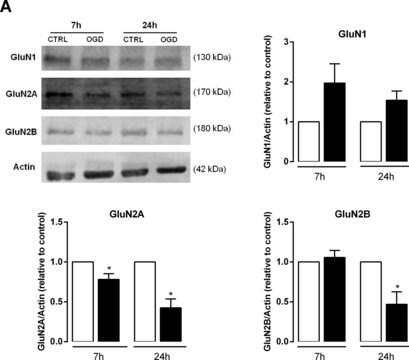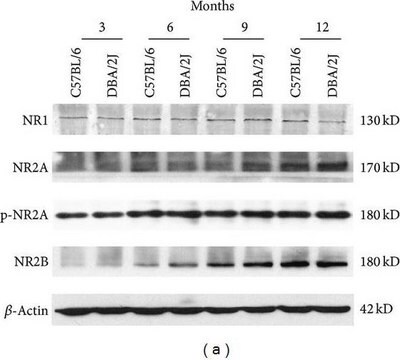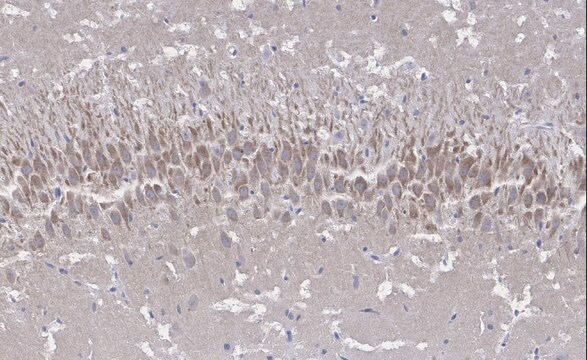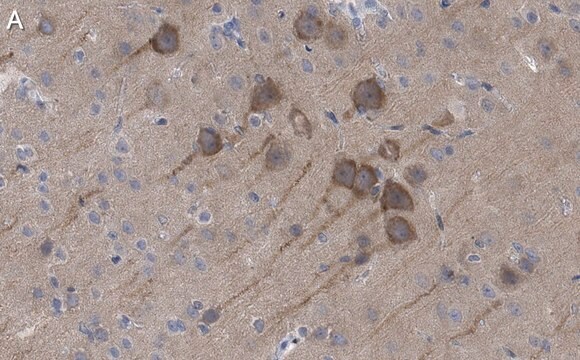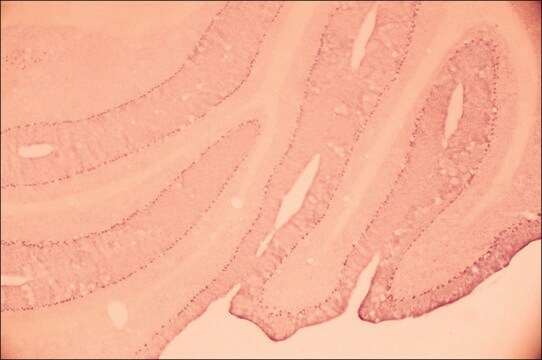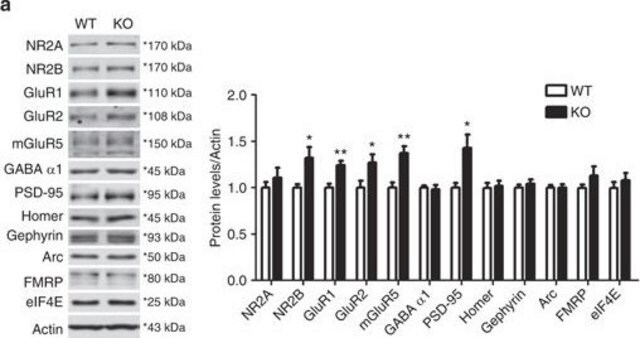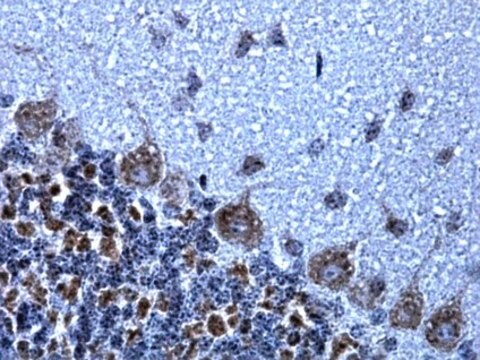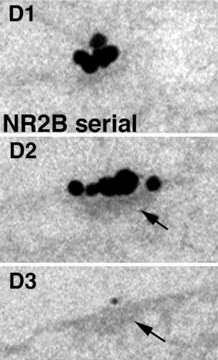AB1557P
Anti-NMDAR2B Antibody
Chemicon®, from rabbit
Synonim(y):
N-methyl D-aspartate receptor subtype 2B, N-methyl-D-aspartate receptor subunit 2B, N-methyl-D-aspartate receptor subunit 3, glutamate receptor subunit epsilon-2, glutamate receptor. ionotropic, N-methyl D-aspartate 2B, Glutamate
About This Item
Polecane produkty
pochodzenie biologiczne
rabbit
Poziom jakości
forma przeciwciała
affinity isolated antibody
rodzaj przeciwciała
primary antibodies
klon
polyclonal
reaktywność gatunkowa
mouse, rat, human
producent / nazwa handlowa
Chemicon®
metody
immunohistochemistry: suitable
immunoprecipitation (IP): suitable
western blot: suitable
numer dostępu NCBI
numer dostępu UniProt
Warunki transportu
dry ice
docelowa modyfikacja potranslacyjna
unmodified
Opis ogólny
Properties of NMDAR include modulation by glycine, inhibition by Zn2+, voltage dependent Mg2+ blockade and high Ca2+ permeability. The involvement of NMDAR in the CNS has become a focus area for neurodegenerative diseases such as Alzheimer′s disease and also epilepsy and ischemic neuronal cell death.
Specyficzność
Immunogen
Zastosowanie
1:1,000-1:2,000 dilution of a previous lot was used on immunohistochemistry.
Immunoprecipitation:
3 μL of a previous lot of this antibody (under appropriate conditions) quantitatively immunoprecipitated all NMDAR2B in 200 μg of rat brain.
Western Blot Analysis:
1:100-1:2,000 dilution of a previous lot (NMDAR2B is present in high concentrations in the hippocampus).
Optimal working dilutions must be determined by the end user.
Neuroscience
Neurotransmitters & Receptors
Opis wartości docelowych
Postać fizyczna
Przechowywanie i stabilność
Komentarz do analizy
Brain tissue, Rat Purkinje cell dendrites, rat hippocampus lysate, HEK 293 cells expressing NR2B.
Inne uwagi
Informacje prawne
Oświadczenie o zrzeczeniu się odpowiedzialności
Nie możesz znaleźć właściwego produktu?
Wypróbuj nasz Narzędzie selektora produktów.
polecane
Kod klasy składowania
11 - Combustible Solids
Klasa zagrożenia wodnego (WGK)
WGK 1
Certyfikaty analizy (CoA)
Poszukaj Certyfikaty analizy (CoA), wpisując numer partii/serii produktów. Numery serii i partii można znaleźć na etykiecie produktu po słowach „seria” lub „partia”.
Masz już ten produkt?
Dokumenty związane z niedawno zakupionymi produktami zostały zamieszczone w Bibliotece dokumentów.
Nasz zespół naukowców ma doświadczenie we wszystkich obszarach badań, w tym w naukach przyrodniczych, materiałoznawstwie, syntezie chemicznej, chromatografii, analityce i wielu innych dziedzinach.
Skontaktuj się z zespołem ds. pomocy technicznej